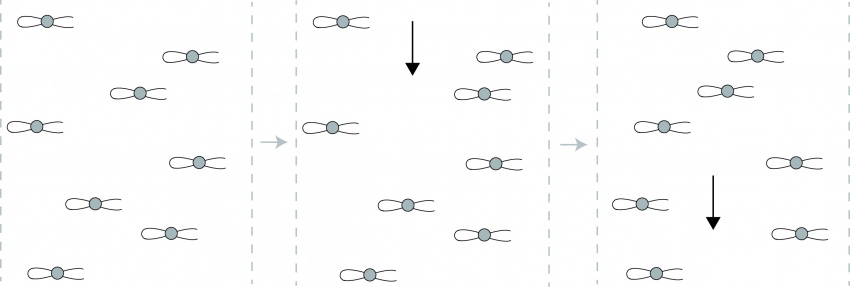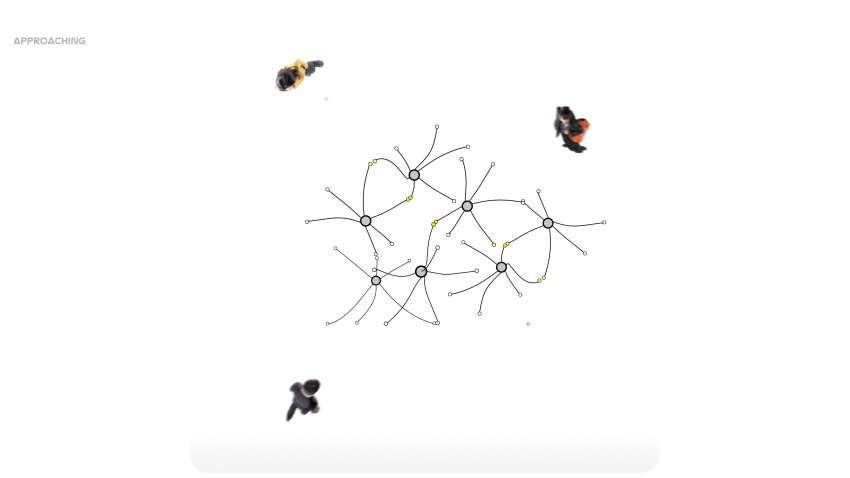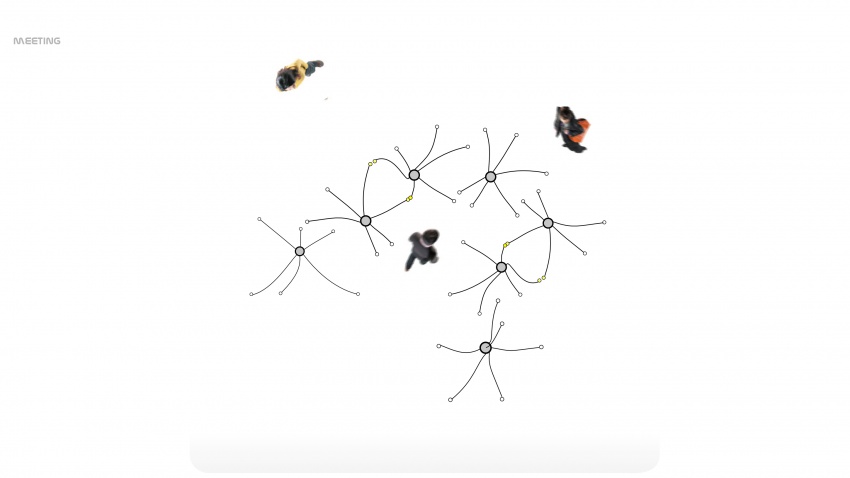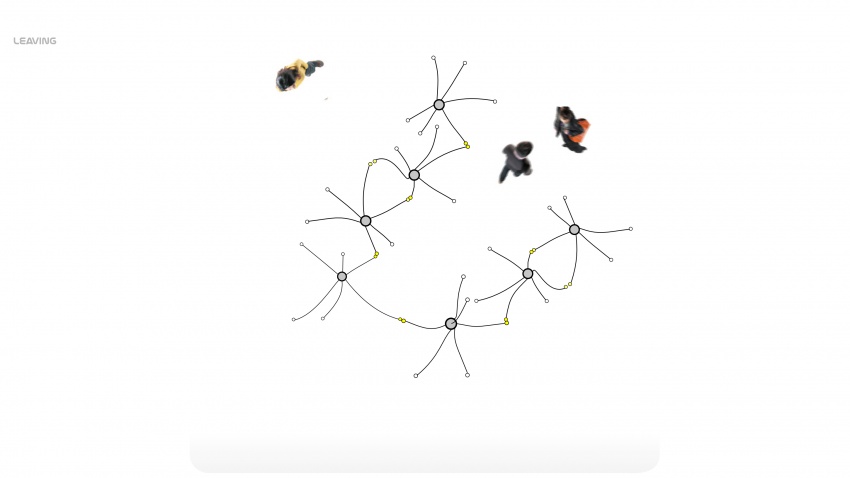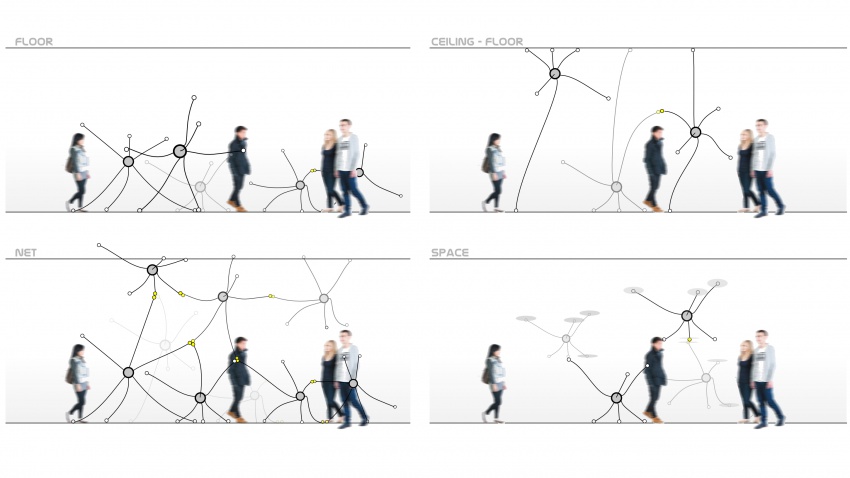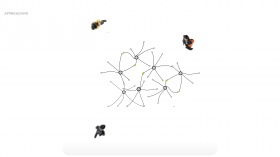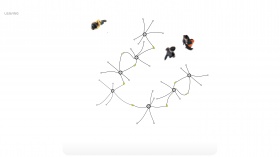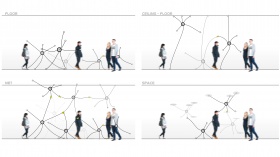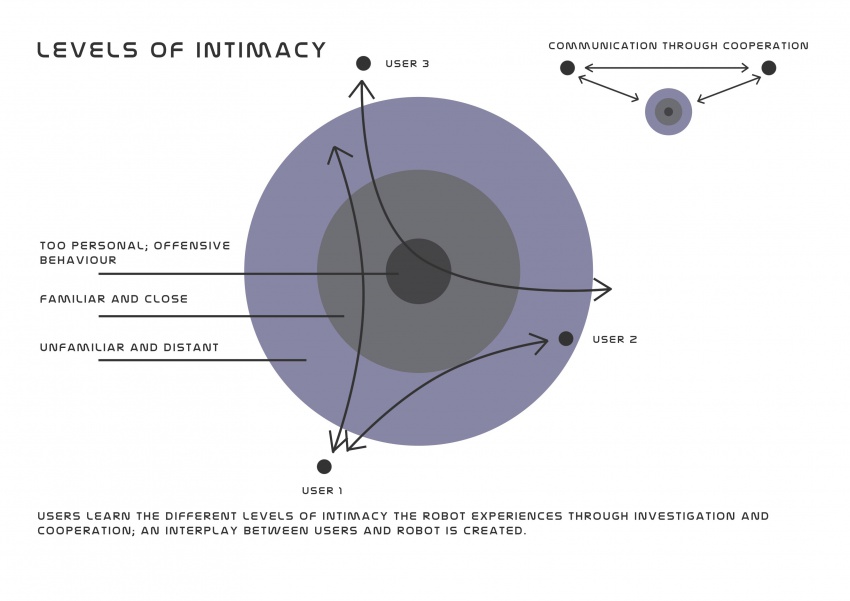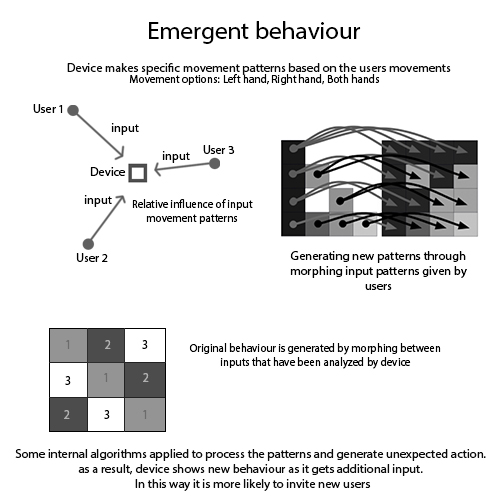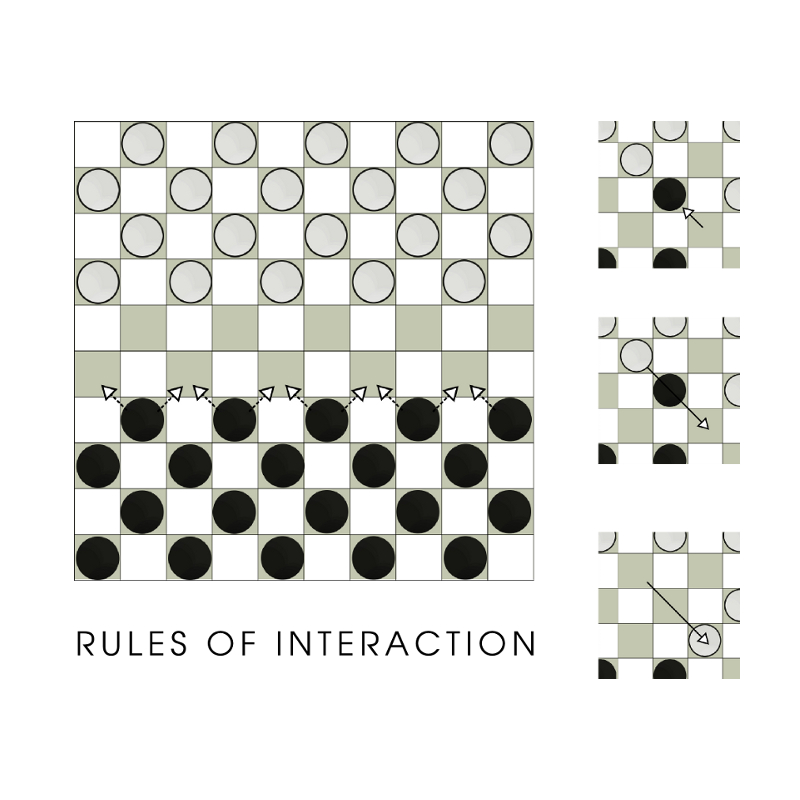project01:Frontpage
Robot environment for people
MAIN
ROBOZOO
roboZoo reached its fifth generation. Here are all of them! They know about each other and people around. What do they do? That's up to people to find out :)
Our roboZOO family has just been published on this extesive portal about robotics.
Next generation of misbehaving robots tries to communicate on distance. Should we domesticate them more or leave them a bit wild? :)
human<interaction>robot
RoboZoo aims at establishing the artificial environment of the interactive swarm of robots. Synergetic integrity with such a substance is the subject of our interest. Investigation of models of behaviours plays a paramount role in the presented concept. The possibility of shaping the environment by artificial creatures bring about the potential for dynamic system and its adaptability to the outer and inner changes.
Motion and visual expression of each independent robot evokes instantenous response in the environment. People perceiving remodelled swarm of artficial creatures are forced to reestablish themsleves in the space in real time. Borders are constituted mutually by robots and humans, as they are sending signals to respective sensors. Therefore they are both altering behaviours.
Mutual communications between both people and robots actuate the ceasless spatial reconfiguration. Robotic sensors are detecting every change in the ecosystem and trigger a constant loop of unexpected transformations. The balance between autonomy and control induces people to discover each independent principle. These essences trigger effortless processes of comprehension and immediate interaction.
WHY: The aim is to set communication beteween robots and humans as a form of interaction. We are investigating motion possibilities on various levels of intimacy.
WHAT: Communicating elements connect, disconnect and move by use of ambiguous limbs. Their motions depend on people's position and movements around the exhibition space. Element's more or less intimate attitude depends on the distance and speed of approaching person. More, amibuity by stretchable materials creates broader spectrum of motions. Elements also create clusters by themselves and form a sort of network.
HOW: This can be archeived by specific motions consisting of rotating servos and specificly movable parts (maybe, but not necessarily limbs) which we are studying right now(see [[1]]).
4 4 2014
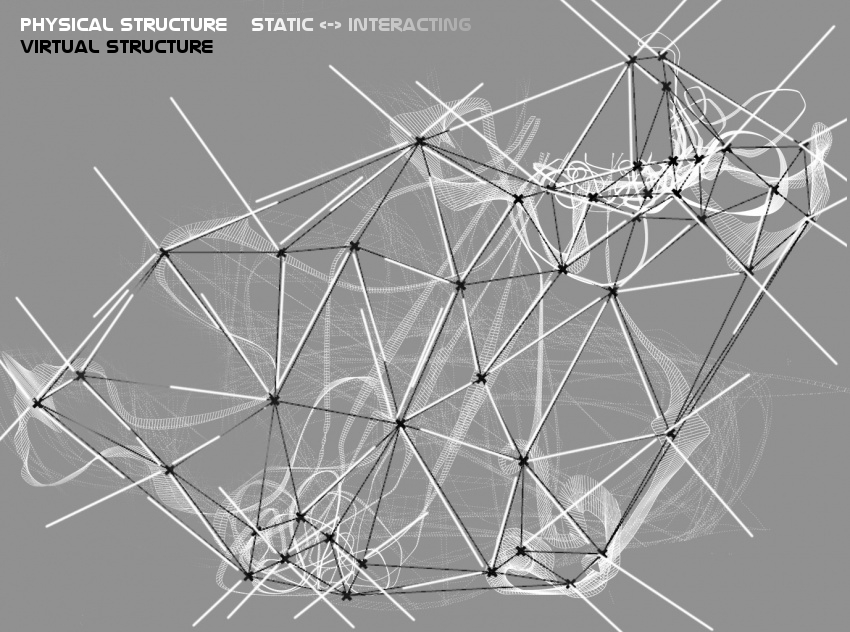 Intelligent Swarm Network as a whole system is made by small robot units that interact with users with its own emergent behavior according to distance.
Intelligent Swarm Network as a whole system is made by small robot units that interact with users with its own emergent behavior according to distance.
Rules: Emergent Behavior
Rules: a tool for interaction - based on draughts playing
Simple constraints can accommodate desired communication. Rules are set to create the area within which the interaction can happen. Discovering and understanding the rules of the game helps user to communicate. As an example can serve this board game: simple rules summary indicates how the game should be played. The user is free to express himself within certain general framework.
Rules: a tool for interaction - based on dog's behaviour
Why?
The way we communicate with one another is often based on how much we have in common, how much we know about one another and what language, customs and non-verbal expressions are used.
This installation's aim is to mediate rather irrational people's expressions at a distance. The distance can be physical but also mental. For example people from different cultures can communicate on certain abstract level by use of these mediators.
How?
The design uses its own universal language originating in the functionality of its own body. This body is perceived by humans that wish to communicate. The reactions of the design to humans expressions are not exact copies of them but more a metaphoric reinterpretation.

